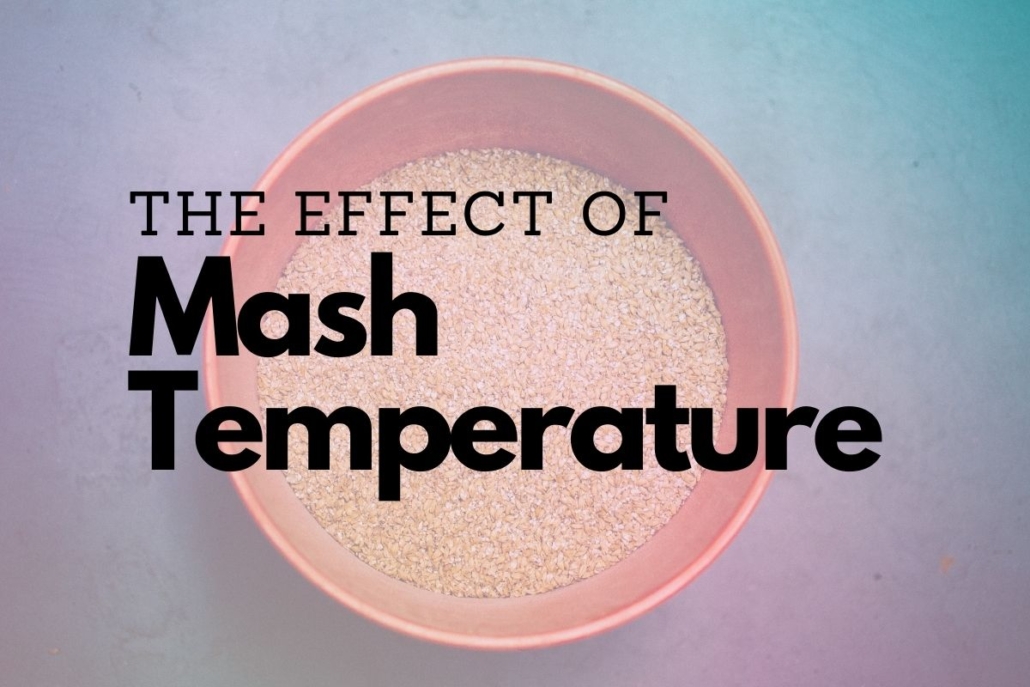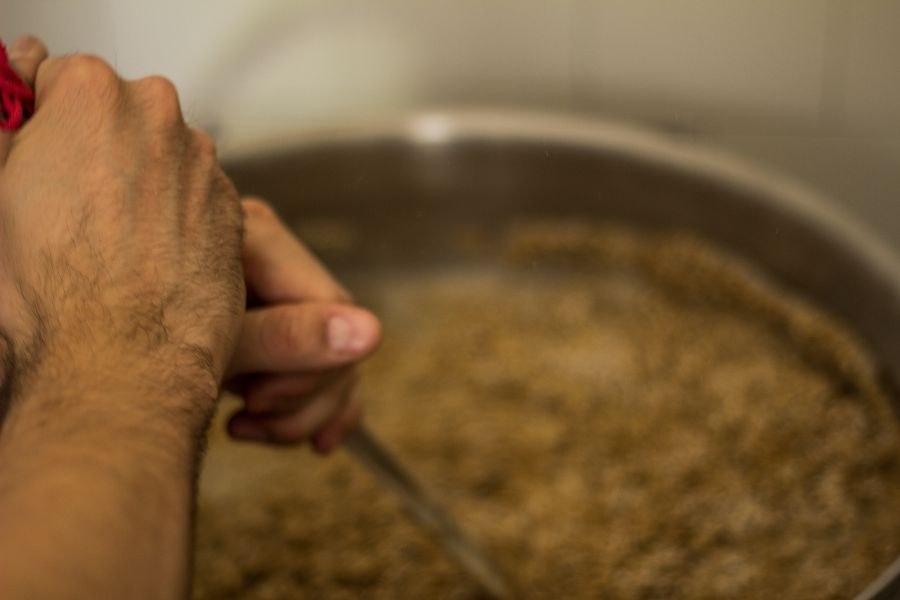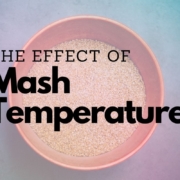The Effect Of Mash Temperature On Beer

All grain brewing means controlling more variables, involving the mash, when you come to making your own beer. The effect of mash temperature on beer is one of these variables that will determine the flavour profile of the finished beer.
Mash temperature is often stated as controlling the body of the beer but there is a bit more to it than that. In this article, we will look at mash temperature, what exactly is going on in the mash and how we can control the mash temperature to have an effect on the finished beer.
Table of Contents
What Temperature Is A Typical Mash?
Most beers have a mash temperature between the range of 63C – 68C / 145F – 155F. A single infusion mash in this temperature range typically lasts for 60 – 90 minutes.
When you come to brewing an all-grain beer, your recipe will indicate the mash temperature. It will most likely fall into the range stated above because at this temperature we are activating enzymes in the malt that convert starches into fermentable sugars.
This range covers the ideal temperature to create as much sugar as possible in the wort and it does this by activating the two most important enzymes for starch conversion; alpha-amylase and beta-amylase.
In the most basic terms we can divide the two amylase enzymes into the following:
Beta Amylase – targets starch making a more fermentable wort
Alpha Amylase – targets starch making a less fermentable wort
At a typical mash temperature range of 63C – 68C / 145F – 155F both these enzymes will be active but one or the other will dominate depending on which end of the mash temperature range you are mashing at.
What If Your Mash Temperature Is Too High?
If you mash in at a strike temperature that is too hot then you will have issues achieving proper conversion of starches to fermentable sugars. Enzymes will denature quite quickly, within a few minutes, at temperatures that are too hot.
If the temperature of the mash is too hot the enzymes that extract sugar from the malt will in affect die. This will leave the majority of the starches intact and yeast won’t be able to ferment them.
Amylase enzymes have a temperature range, between 60-71C / 140-160F in which they are active to break down molecules, in this case, starches.
If the temperature is too low they won’t become active until the temperature starts approaching that range. Above this temperature range and they denature and cannot be retrieved.
What If Your Mash Temperature Is Too Low?
If the mash temperature is too low when making beer, it can result in a less efficient conversion of sugars from the grains, resulting in a wort with lower-than-expected sugar content and ultimately a weaker beer with less alcohol and less fullness in the body and flavour.
There may also be a lot of unconverted starch in the wort which will result in haze and stability issues in the finished beer.
Adjusting The Temperature Of The Mash

When we mash in the strike temperature is typically a few degrees above the intended temperature of the mash temperature.
This raised strike temperature allows for the temperature loss that occurs when the brewing liquor hits the grain and the mash tun which is cooler.
Stirring the mash and properly mixing the grain and water together helps to quickly equalise the temperatures involved to hit the intended mash temperature.
Monitoring the mash temperature quickly with a probe will tell you if you are too hot or too cold. If the temperature is too high after a few minutes then a very small amount of cold water stirred into the mash will prevent the enzymes from denaturing.
If you need to increase the temperature a small amount of boiling water can be added to boost the temperature.
Alpha Amylase & Beta Amylase During The Mash
Both amylase enzymes are created during the malting process. The presence of these enzymes is highest in base malts that are lightly kilned and make up the majority of the malt in a typical recipe.
The amylase enzymes are responsible for breaking down long-chain starches into smaller and simpler sugars that are suitable for being fermented by yeast. Amylase enzymes often work together because the temperature range they are activated at has a slight amount of crossover.
- Alpha amylase breaks down large, long-chain starch molecules into smaller and more soluble molecules which are more readily fermented but leave some unfermentable dextrins and sugars.
- Beta amylase, just like alpha amylase, breaks down starch molecules. Beta amylase breaks down starches into sugars that are readily fermentable such as maltose and glucose.
In essence, these two enzymes work together with alpha-amylase breaking down starches which are then broken down further by beta-amylase into simpler sugars that are readily fermentable.
What Temperatures Affect The Enzymes In The Mash?
There are numerous enzymes that can into effect during the mash and they all operate at different temperatures, dilutions and pH.
Our two most important enzymes, the amylase enzymes, that dissolve starches work in the following temperature ranges
- Alpha Amylase: 65 – 71C / 149 – 160F
- Beta Amylase: 60 – 65C / 140 – 149F
By shifting the temperature of the mash we can target either amylase enzyme knowing there is some degree of crossover.
Other Enzymes In The Mash
There are also other useful enzymes to know about, other than the amylase enzymes.
Beta glucanase – target the glucan molecules or gums that are present in the mash. Wheat malt or lightly kilned lager malts have higher percentages of gums and these affect the viscosity of the mash.
A mash step between 35 – 45C / 95 – 113F will activate beta glucanase which breaks down these gums and makes lautering much easier.
Protease, peptidase – target the proteins in the mash. The use of adjuncts or malts that are not as well modified will lead to higher protein levels in the beer. This causes haze and stability issues in the finished beer.
A temperature rest around 46 – 55 C / 115 – 131F will encourage protease to break down the excessive proteins.
Target these enzymes will require a multi step mash that starts with the lowest temperature and gradually rises throughout the mash. Once these temperature ranges are exceeded the enzymes are denatured and will no longer be able to breakdown their target molecules.
You can take a look at this guide to step mashing and some of the regimes that will affect a beer by raising the mash temperatures throughout the whole mashing period.




Leave a Reply
Want to join the discussion?Feel free to contribute!